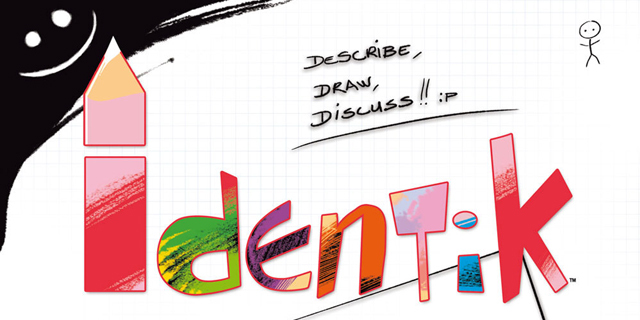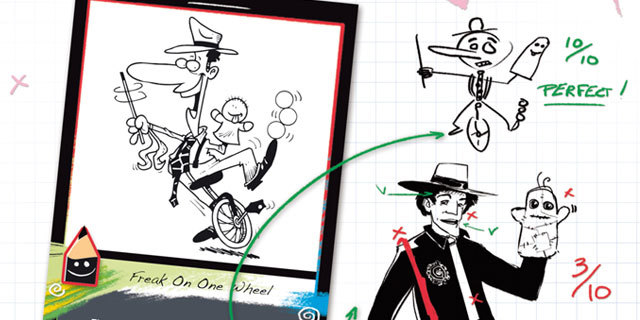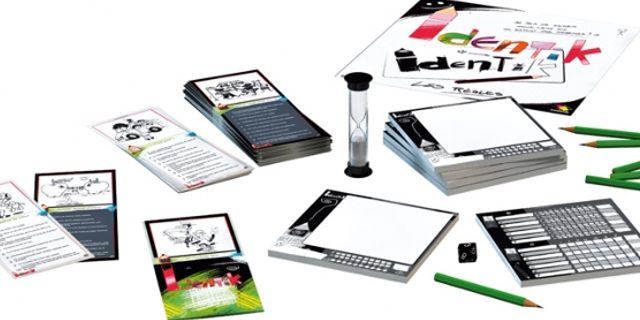
A lot of party games ask players to test their artistic prowess while trying to get others to identify a word or phrase. From classic titles like Win, Lose or Draw and Pictionary to slightly more modern fare like Cranium variants, none of them endear themselves to those whose skills at putting words into images might be somewhat lacking. This hole is where Identik (originally known as Portrayal in its 2005 release) thrives.
Like traditional sketch games, each player receives a blank pad of paper and a pencil. Each round, one is the Art Director and selects one of the double-sided scene cards, sliding it into the cover sleeve so only the art and the title are showing. The Art Director then has 90 seconds to describe the scene in question, ideally supplying enough details for the other players (“artists”) to reproduce it.
This is harder than it sounds, as these scenes can be fairly involved, and 90 seconds is not a ton of time. As an artist, rough sketches are the order of the day, as time spent on intricate details and effects is time wasted. This is not an art contest, remember. You will score solely on how well you incorporated specific details into your sketch.

These ten specific details are hidden underneath the cover sleeve, beneath the sketch itself. After the sketch period, artists pass their pads to a neighboring artist to act as judge. The art director then reads the ten details, one at a time, and each judge determines whether or not that detail is present in the artist’s sketch.
Every artist who includes one of these details, which can cover absolutely anything from the number of buttons visible on a shirt to the approximate size of a subject’s nose, scores one point. The art director also scores one point per item included on any artist’s sketch. If they neglect to mention a given detail – which, to be fair, they don’t know beforehand any more than the artists do – they probably won’t score for it… unless a particularly creative or lucky artist includes it by accident! Also, one detail is randomly determined to be a “super criteria” before each round begins; artists who include this detail score three points instead of one, but the art director still only scores one point for that detail being included somewhere.

Ideally, a full game consists of each player serving as art director once, at which point the total scores are added up. Thus the length of a game is sort of dependent on the number of players, but at 90 seconds per round plus judging/scoring, this is hardly a factor. Materials for six players are included in the box, but the only limiting factor to the number of players is the availability of blank pieces of paper and some sort of writing utensil.
More limiting is the game’s actual availability, as it has been out of prints for a couple of years now. If you can find a copy, Identik is a great icebreaker and good for casual gamers, and a reasonable filler for more strategic groups.



















